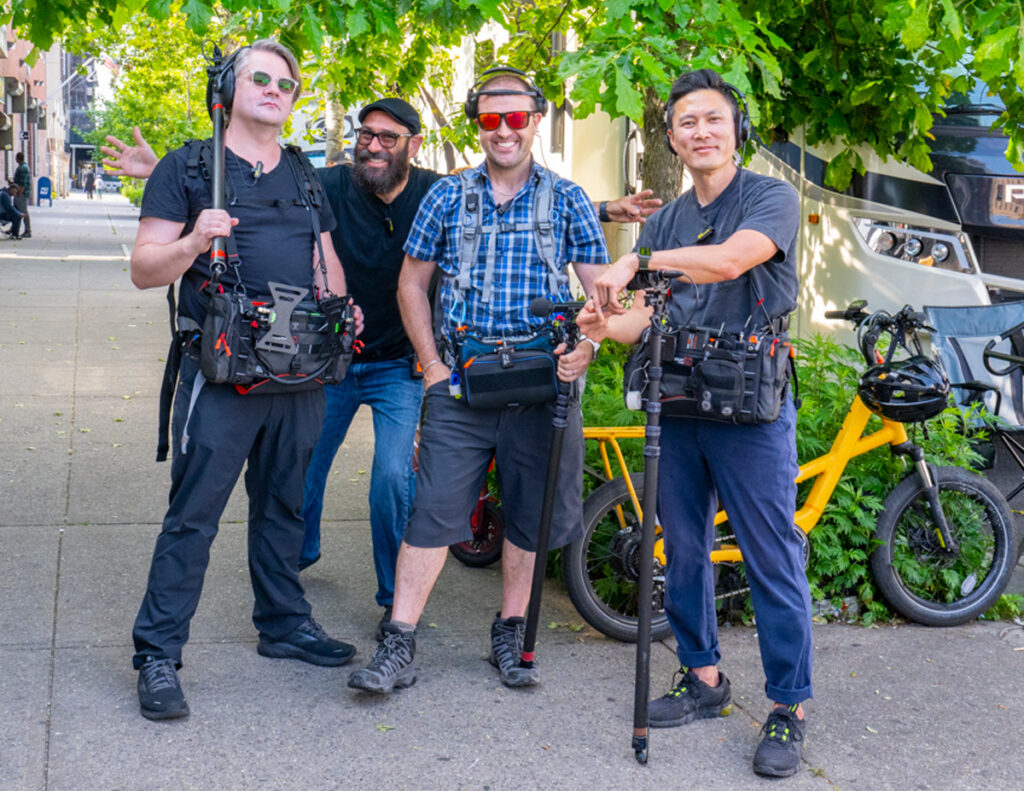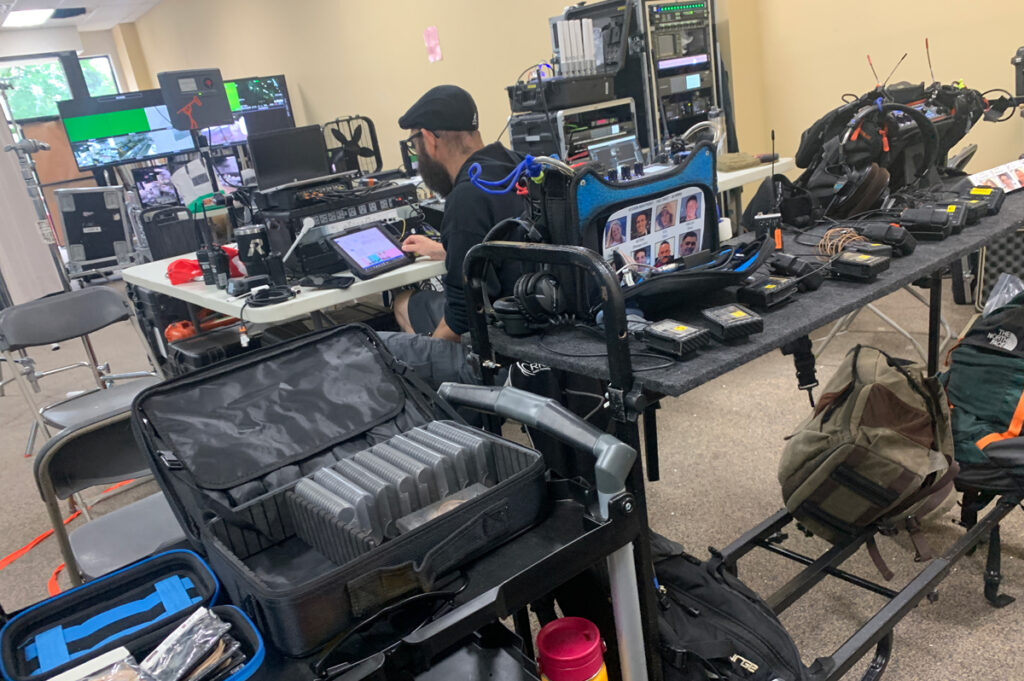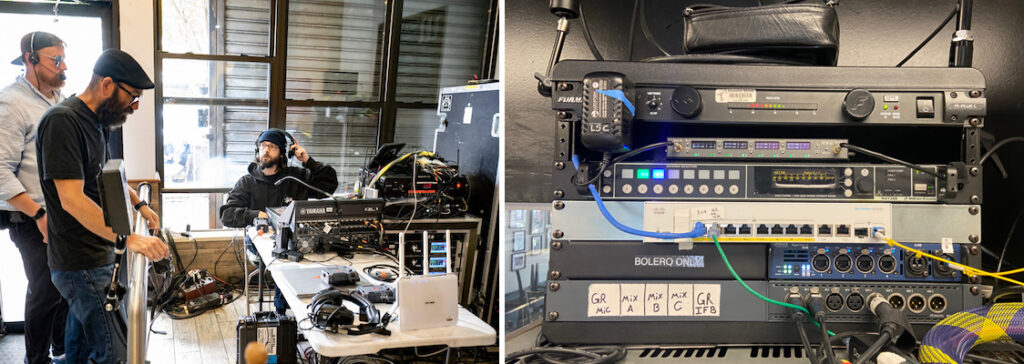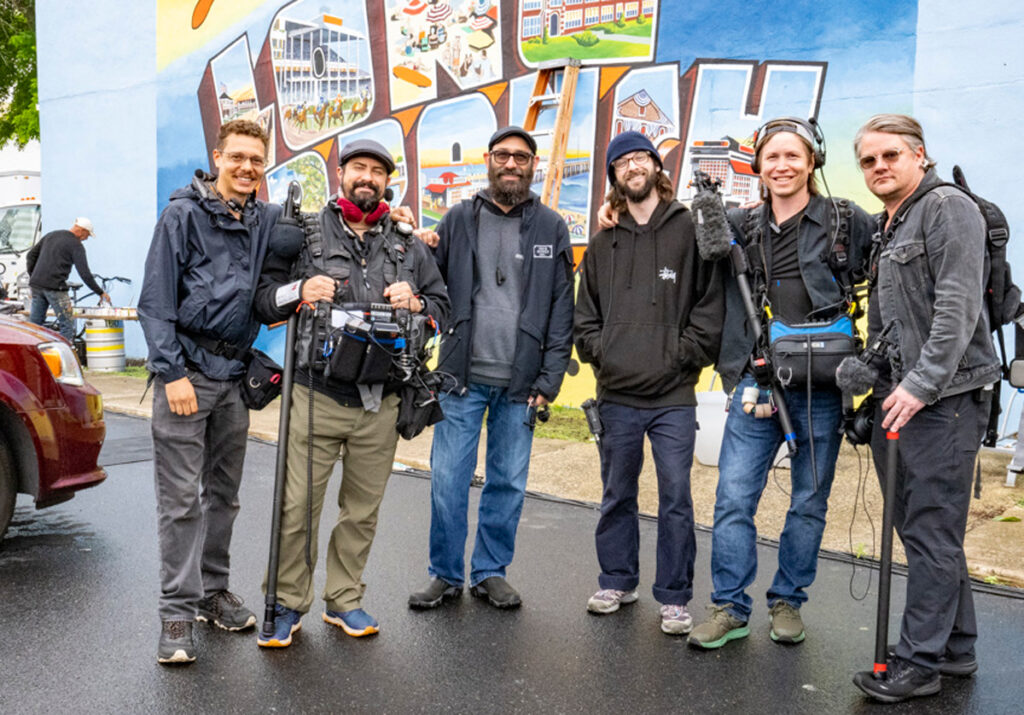
With over 100 credits to his decades-long career Las Vegas-based production sound mixer Fernando Delgado, CAS of Stickman Sound isn’t one to niche himself into a single genre. “A thing I noticed when I was younger was that some people only worked in one area of the business. I think what’s helped me build my career is to identify as a ‘sound person’ and not exclusively as a TV person, film person, or ENG mixer,” he says.
Because of it, Delgado has worked with HBO Boxing, the NFL, NHL, UFC, and on features like Ghostbusters: Afterlife and Taylor Sheridan’s TV series Battlebots. His latest project is the newly retooled reality series Kitchen Nightmares with Gordon Ramsay which previously aired for seven seasons between 2007 and 2014 and saw the celebrity chef revitalize failing restaurants. The show’s return, which premiered on Fox on September 25, brings with it all the familiar flavors audiences have grown to love, and of course, Ramsay’s fiery charm. As the sound supervisor, Delgado designed a recording system to include Zaxcom’s versatile Nova mixer-recorder and Digital Recording Wireless to capture the emotional tenor of the series.

Delgado’s start in production sound was a serendipitous journey. “I think about what my life would have been like if I didn’t find my performing arts high school in Las Vegas. That changed the trajectory of my life and sent me along this path that I have been on ever since,” he says. Delgado’s high school teacher gave him a brochure about Full Sail University and he happened to find it while living in Florida post-graduation, where the campus is located. “I went on a tour of the school and realized this was where I needed to be.” At the time, Full Sail only offered a few programs, one being a recording arts degree. After graduating in 1997, Delgado thought he would be making records, but back in Las Vegas, his pivot into production sound came from opportunity. “When I first started freelancing there were more TV jobs and they offered more money,” he notes. “I started my family young, so the idea of making a couple extra hundred bucks a day doing the same thing for television was very appealing to me.”
One of his early breaks was working for HBO Boxing which opened the door to live productions. “Their crew was always the best and they set the bar pretty high, so I learned very quickly how a live production should go,” he says. “One thing I learned about an HBO broadcast was there was no anxiety. Nobody was freaking out about it being live. The way the directors and producers conducted themselves and how they spoke was very calm. Everything was so well rehearsed.” The tutelage brought a calm demeanor to Delgado’s on-set persona – never overreacting to challenges or stressful situations.
Today, Delgado mostly finds himself supervising productions. “I have always been a gear nut and loved microphones and equipment. I always would look at other peoples’ systems and how they were designing it,” he says. “I always enjoy hearing the producer’s vision and expectations and finding ways to make it happen.” The natural progression into the position stems from his years of varied work experience but Delgado also enjoys the mentoring aspect of being an audio supervisor. “When building a team, I surround myself with people who are strong in one area and not necessarily in another. Then I’ll find people in contrast so the team leaves more knowledgeable than when they arrived.”

Delgado has also worked with Ramsay on Hell’s Kitchen, The F Word, and Next Level Chef, but for Kitchen Nightmares, “everything was different” regarding the audio approach as it relied on multiple sound teams using a bag setup for the location-driven show. “I had three production mixers on a team, and there were two different teams. Then I had two A2s per team and myself for a total of 11 crew members. Each bag setup rocked a Zaxcom Nova, two MRX414 receivers, and ZMT3-X wireless transmitters.” Delgado appreciated the Nova’s versatility. “It’s a very powerful recorder for its size and capacity. Each Nova had 8 channels of receivers, and with 3 recorders on set, we had a total of 24 receivers. So there was no way we weren’t going to be able to record somebody.”
The Zaxcom ZMT3-X wireless were paired with DPA 6061 lavs since they have great off axis rejection, and each transmitter recorded audio internally to a microSD card as backup. In any given production day, there would be up to 10 different wireless lavs recording talent or hidden around the restaurant to capture patrons tasting food. “It’s nice to know we have the internal recorded audio as an option,” says Delgado. “We did take the internal audio every episode, and if there were any times we weren’t 100% sure, we would go to the backup.”
Feeding the cast microphones to the control room was the Zaxcom RX-8, an eight-channel receiver interface. “The system was very powerful and very small,” he says. “Both of our audio and intercom networks were connected via fiber switches and we used Dante to connect the RX-8 to the rest of the audio network. It was a very slick setup.”

In planning the series, Delgado deployed one sound team to mix all the even-numbered episodes and a second team for the odd-numbered episodes. Each episode of Kitchen Nightmares was a five-day shoot. Day 1 was a load-in day, while Day 2 was an interview and dinner service day with the restaurant owners. On Day 3, Ramsay would discover what’s wrong with the failing restaurant before its overnight renovation, leading into Day 4 for the new menu and dinner service. Final interviews with the restaurant owners fall on the last day with production wrapping the location. Delgado would work the first three days with the crew, and if everything was running smoothly, he would start to prepare for the next episode.
Delgado explains the biggest upside to the Zaxcom ecosystem is that it doesn’t require much to set up and is very powerful on set. A challenge that arose during the new season was the intense smoke hitting Brooklyn from the Canadian wildfires. “We built our control room in a vestibule on the street the day the smoke rolled in, and the production was forced to shut down for two days. Normally, we would have one day to build and another to tweak things before Gordon was on set. In this case, we had about two hours to rebuild the control room inside a coffee house two businesses over before Gordon was expected to arrive on set. Because our show was being recorded on both the Zaxcom transmitters and Novas via the ENG crews, the only thing we had to worry about was our PLs and IFBs. It was nice that there was never a worry about the recording when we got shut down, I only had to lose sleep over the intercom system potentially not working in time for the start. We did it only fifteen minutes past start time, and it worked great, but it was a bit of a dance.”

Delgado says the longevity of his career is partly because of his approach to preparation. “I think the best approach is simplicity regardless of what the show is or the requirements. Everything generally breaks down to how many microphones will be used. For me, the approach is the same as if the job is a single recording or a multi-track show. I try to break everything down to being super basic. I think if you can break it down into small chunks that are easy to digest, it simplifies everything.”
You can catch all new episodes of Kitchen Nightmares on Fox.